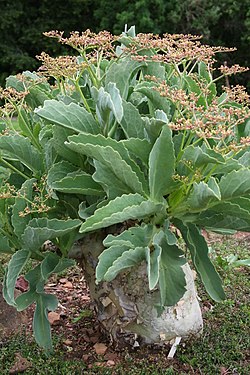| Cyphostemma | |
|---|---|
 | |
| Cyphostemma juttae | |
| Scientific classification | |
| Kingdom: | Plantae |
| Clade: | Tracheophytes |
| Clade: | Angiosperms |
| Clade: | Eudicots |
| Clade: | Rosids |
| Order: | Vitales |
| Family: | Vitaceae |
| Tribe: | Cayratieae |
| Genus: | Cyphostemma (Planch.) Alston |
| Species | |
See text | |
| Synonyms [1] | |
Cyphostemma is a flowering plant genus in the family Vitaceae, with around 250 species distributed throughout the tropics and subtropics. These species are caudiciform and used to belong to the genus Cissus . [1] The genus name comes from Greek kyphos, meaning hump, and stemma, meaning garland.
Contents
Within the Vitaceae, Cyphostemma is most closely related to Cayratia and Tetrastigma . [2] All species of Cyphostemma were once included in the genus Cissus but are now considered to be distinct. [3]









